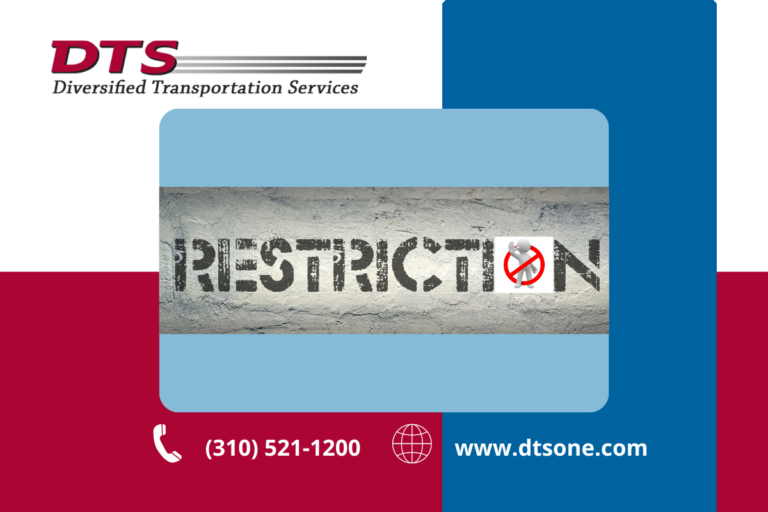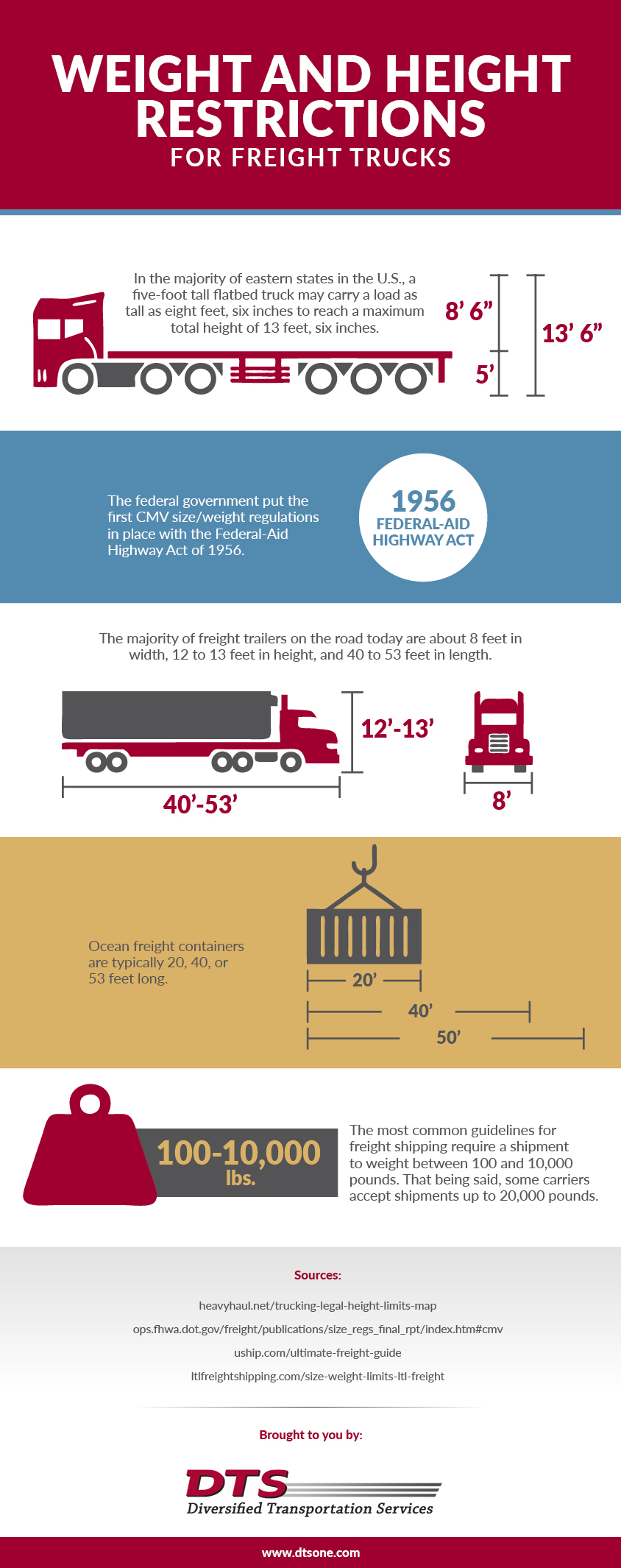
You’ve seen the signs on the road while your commuting to work, going to the grocery store, or picking your kids up from soccer practice. Bridges over the water tell you that there is a weight limit of so many tons. Bridges that pass over highways let you know how much clearance you have so you don’t hit the top.
You’ve never had to worry about these restrictions before because you drive a pretty normal-sized car, SUV, or truck. Freight trucks, on the other hand, actually have to pay close attention to these warnings and restrictions.

For the most part, freight trucks have a relatively standard size in terms of what they can carry. For example, the majority of eastern states in America, a five-foot flatbed truck can carry a load that is eight feet tall, six inches wide, and 13 feet, six inches tall. These trucks typically don’t have a problem getting around.
Freight trucks weren’t always restricted in their travels, though. Before 1956, when the federal government first put the CMV size/weight regulations in place with the Federal-Aid Highway Act, freight trucks could take whichever route they deemed fit to get their shipments to their end destination.
Today, most freight trailers on the road are roughly eight feet wide, 12 to 13 feet tall, and 40 to 53 feet long. In terms of ocean freight containers, they can range anywhere between 20, 40, or 53 feet long. Most commonly, freight shipping guidelines require a shipment weight between 100 and 10,000 pounds. Some carriers will accept shipments weight up to 20,000 pounds, though.
Why does all of this matter? Well for the most part, the local towns and cities want to protect their highways and structures from being damaged by oversized and overweight freight shipments. They want to make sure the aesthetics are kept up in rural areas, for example. They also want to keep their bridges and highways in good shape for everyday travelers. Finally, they want to keep congestion to a minimum by keeping large trucks away from high traffic areas.
Restrictions vary from state to state, so freight shippers must do their job to keep up-to-date with the current restrictions before they send your freight out for delivery.
Whether you're a company looking to improve one facet of your supply chain, your entire supply chain, or simply looking for a transportation and logistics consultation, we can help.